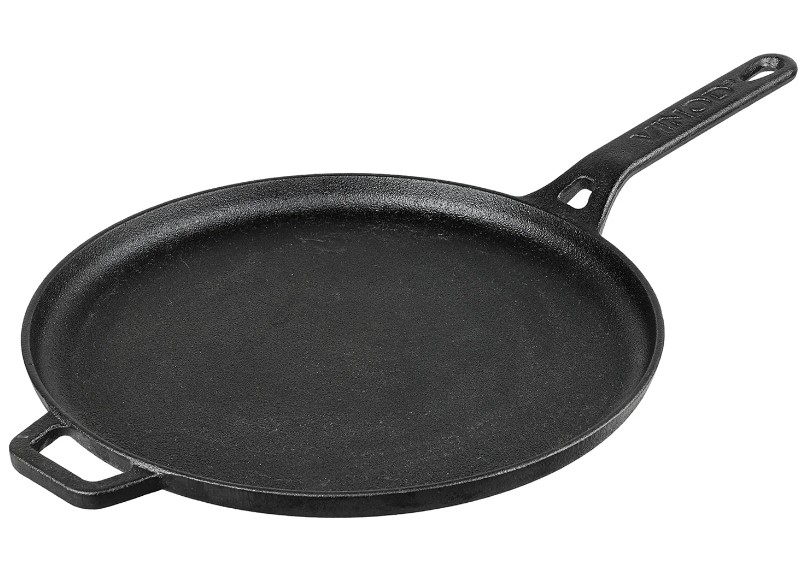The Rich Culinary Legacy of Dosas
Dosas are an integral part of South Indian cuisine, celebrated worldwide for their crispiness, flavor, and versatility. A quintessential breakfast dish, the humble dosa can be savored in various forms, from the classic plain dosa to the spicy masala dosa. The foundation of making perfect dosas lies not only in the recipe but also in the right cookware, with the cast iron tawa being a pivotal tool in achieving that impeccable balance of texture and taste.
Understanding the Importance of a Cast Iron Tawa
Why Cast Iron?
Choosing the right cooking surface is crucial when making dosas, as the tawa directly influences how the batter spreads, cooks, and crisps up. Cast iron tawas are a popular choice among dosa aficionados due to their exceptional heat distribution and retention qualities. Unlike non-stick surfaces that may wear down over time, cast iron tawas build up their seasoning, enhancing their non-stick properties with each use. This creates a smooth and even cooking surface, perfect for crafting the ideal dosa.
Preparing Your Cast Iron Tawa
Before getting started, it’s essential to properly season your cast iron tawa. Seasoning involves coating the tawa with a thin layer of vegetable oil and heating it until the oil forms a protective layer. This process not only prevents the dosa from sticking but also extends the longevity of the tawa. Over time, as the seasoning builds up, the tawa becomes more resilient and effective, making dosas ever easier to turn out perfectly.
Perfecting the Dosa Batter
Ingredients and Proportions
The art of making spectacular dosas starts with the batter. Traditional dosa batter is made from a mixture of rice and urad dal (black gram), soaked, ground, and fermented. The proportion of these ingredients significantly affects the texture of the dosa―usually about three parts rice to one part dal. Additionally, adding a small amount of fenugreek seeds can aid fermentation and introduce a nuanced flavor to the batter.
The Fermentation Process
Fermentation is where the magic happens, developing the batter’s tangy flavor and airy texture. Ideally, the batter should ferment for about 8 to 12 hours in a warm environment. You’ll know the batter is ready when it has doubled in volume and exudes a slightly sour aroma. The use of a cast iron tawa further enhances this fermentation process, retaining even heat distribution, which is crucial for cooking fermented batter.
Crafting the Perfect Dosa
Spreading the Batter
The technique of spreading the batter on the hot tawa defines the dosa’s thickness and crispiness. Begin by pouring a ladleful of batter into the center of the preheated and seasoned cast iron tawa. Using gentle circular motions, spread it outward in a spiral, forming a thin layer. The tawa’s consistent heat will aid in evenly cooking and browning the dosa.
Ensuring the Ideal Cook and Crisp
After spreading the batter, drizzle a small amount of oil around the edges. This helps in achieving the perfect crispy edge while also making it easier to lift the dosa off the tawa once cooked. Allow the dosa to cook until it achieves a golden-brown hue. The cast iron’s heat retention properties ensure that the dosa cooks uniformly, delivering that characteristic crispy texture without burning.
Exploring Dosa Varieties
The Classic Plain Dosa
Enjoy the simplicity of a plain dosa, which showcases the elegant interplay of flavors from the fermented batter and the seasoned tawa. Serve plain dosas with coconut chutney and sambhar for an authentic South Indian meal experience.
Masala Dosa: A Flavorful Twist
For those who enjoy a spicier variant, the masala dosa is the perfect choice. Simply place a dollop of spiced potato filling at the center of the dosa before folding it into a neat roll. The combination of spicy potato and crispy dosa creates an unforgettable taste, all made flawlessly with a well-maintained cast iron tawa.
Caring for Your Cast Iron Tawa
Cleaning and Maintenance
Proper maintenance of your cast iron tawa is essential to ensure its longevity and performance. After use, allow the tawa to cool before washing it with a soft sponge and warm water.Refrain from using harsh detergents, as they may remove the seasoning. Once cleaned, dry the tawa thoroughly to prevent rusting, and apply a light coat of oil before storing.
Cost-Effectiveness of Cast Iron
When considering utensils, the initial dosa tawa price for cast iron may be higher than other materials, but its durability promises value over time. A quality cast iron tawa can last a lifetime if cared for properly, becoming a staple in your kitchen for dosa making and many other culinary exploits.
Conclusion
Mastering the art of making dosas with a cast iron tawa involves a blend of skill, understanding, and appreciation for tradition. The cast iron tawa not only enhances the cooking process but imbues each dosa with a taste that captures the authentic essence of South Indian cuisine. When the hard work of preparing the batter meets the practicality of a well-seasoned tawa, the result is more than just a meal; it’s a delightful journey into culinary tradition and innovation. Whether you are a seasoned cook or a beginner, embracing the ways of the cast iron tawa can transform your dosa-making experience into an art form worth mastering.
